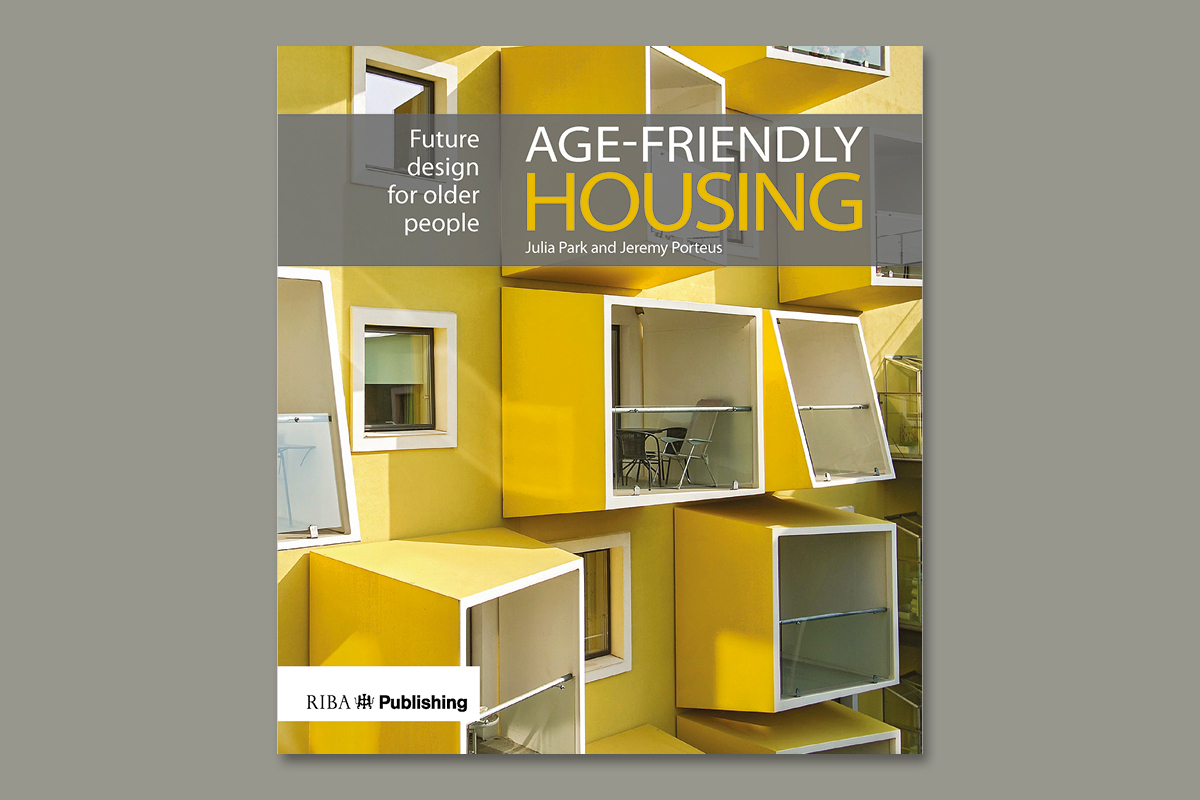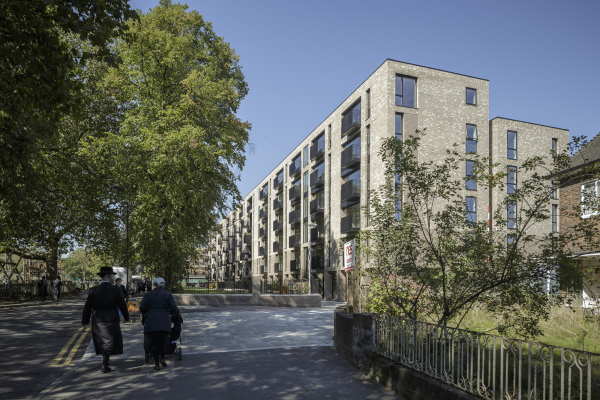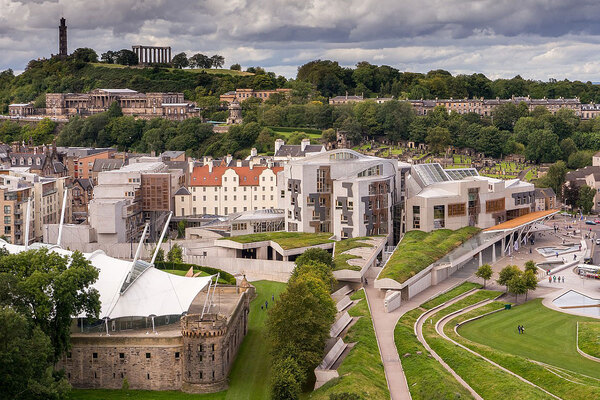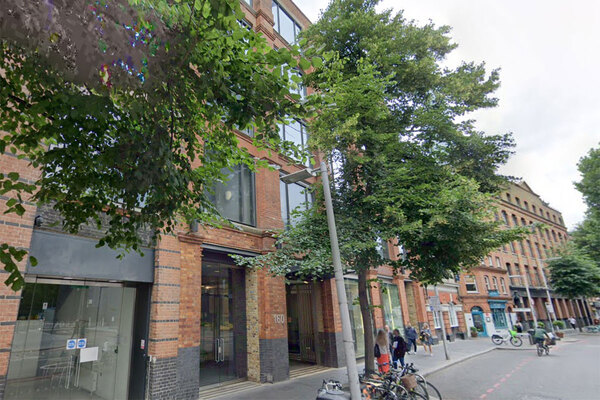You are viewing 1 of your 1 free articles
How do we integrate age-friendly housing with the wider community?
In an extract from a new book published by the Royal Institute of British Architects, Julia Park and Jeremy Porteus consider different approaches to ensuring new housing for older people is at the heart of communities
A new publication by RIBA called Age Friendly Housing: future design for older people looks at the challenges we face in providing homes for older people as the population ages.
The book looks at the challenge of an ageing population, the impact of government policies, approaches to new build projects, the social value of shared space, ensuring the importance of home, and at the use of technology.
It is written by Julia Park, architect and Head of Housing Research at Levitt Bernstein, and Jeremy Porteus, managing director of the Housing Learning and Improvement Network.
In an extract below, the pair consider several possible approaches in ensuring age-friendly housing is integrated with the community.
Moving in, not moving out
Most of us want to remain active and useful members of the wider community for as long as possible.
Statistically, older people are among the greatest givers of free time. 30% of voluntary work is carried out by people over 65; each spends an average of over 100 hours ‘informally volunteering’, and more than 55 hours in formal volunteering roles.
This is estimated to be worth £10 billion to the UK economy.
Today’s older people are the babies that boomed in the 50s and 60s; often characterised as liberal, sociable and relatively wealthy.
This cohort may be retiring in the literal sense, but are more willing to speak up than their parents or grandparents, particularly about how they wish to live.
This creates a significant ‘pull factor’ – demand for the right types of housing in the right places.
While many still find the idea of retiring to the country or the coast an attractive proposition, growing numbers are choosing to remain in, or move to, a town or city to take advantage of the social and cultural opportunities.
This has implications for the project brief for new age-friendly developments.
On the one hand, it may be sensible to provide fewer, or smaller, communal facilities within the development – because they already exist nearby.
On the other, it may mean making more of the communal facilities by opening them up to the wider public to create a ‘community hub’, often able to generate useful revenue through rental income.
In most towns and cities, there will be scope for both approaches.
Intergeneration (or multi-generational) housing
Inter or multi generational developments achieve the most finely grained, mixed communities.
Hanover Housing Association’s Lime Tree Court combines three distinct housing types and tenures side-by-side in a single building.
At one end, there are homes for outright sale, at the other, assisted living homes for older people, and in the centre, shared ownership apartments for the local Orthodox Jewish population.
Externally, the building reads as one, only closer inspection reveals the subtle differences that respond to the needs of each group.
A recent Dutch model of intergenerational living, in which university students live alongside older people, is inspiring.
Known as ‘Homeshare’, the students enjoy cheap rent in return for providing a few, regular hours of practical help (shopping, tidying or reading) or simply companionship, to their older neighbours.
A similar scheme is being successfully piloted in Rudolph Seniors Home, Helsinki’s largest state care home.
Three young people are living among, and engaging with, the older residents, in rooms that are no longer considered suitable for them.
“The bond between grandchildren and grandparents is often extremely strong and different from the parental relationship”
Part of a wider, city-funded initiative, ‘A Home that Fits’, the aim is to ease homelessness, and relieve the social isolation felt by some of the older residents.
Here in the UK, several universities are exploring how to develop mutually beneficial living arrangements between alumni and their student populations.
At the micro-level, there are signs that ‘granny flats’ are making a comeback.
Grandparents have certainly been playing a greater role in childcare over the last 15 years or so; they are enjoying many more active, post-retirement years, just as ‘stay-at-home mums’ become less common, single parenting more prevalent, and nurseries increasingly unaffordable.
The bond between grandchildren and grandparents is often extremely strong and different from the parental relationship.
Where this works well, it brings three generations closer together.
It is encouraging that volume house-builders see a market for this type of arrangement, which revives an old tradition and combines proximity with independence.
While the house may need to be relatively large, it will be effectively home to what otherwise would have been two separate households– a valuable way to ease the housing shortage.
A recent RIBA competition produced a range of other solutions, including a number of purpose-designed pods intended for the rear gardens of existing suburban housing.
As 75% of over-65s are homeowners, and the majority of those are mortgage free, most grandparents would be in a position to contribute to the cost of arrangements such as these.
New garden towns and villages
Large-scale new developments and urban extensions offer a significant opportunity to create mixed and sustainable neighbourhoods.
With the benefit of hindsight and a clean sheet of paper (none of the messy constraints of an existing town that has grown in an ad hoc way), new settlements can combine a wide range of housing typologies with the optimum social and physical infrastructure to create ‘a model community’.
It makes a great deal of sense to house older people in the heart of a community, rather than its periphery.
Support could be provided by a health and care ‘hub’ or ‘zone’ offering GP, dental, ophthalmic, therapy and diagnostic facilities, spaces for dance, music, exercise, IT and learning for the whole community, and providing a base for coordinating social care
“It makes a great deal of sense to house older people in the heart of a community, rather than its periphery”
Local school facilities such as ball courts, sports pitches, swimming pools and performance spaces could all be open to the community during the evenings and at weekends, and interaction between young and old encouraged.
Some of these opportunities are being explored in plans for Ebbsfleet Garden City in Kent – the first new town to be designated in the UK for 50 years, the first garden city for 100 years and the largest of the ten Healthy New Town (HNT) pilots – being developed collaboratively through a programme pioneered by NHS England.
Surburban intensification
The general approach to the design and density of suburban housing has barely changed over the last 40 years.
Across the country, new suburban development still comprises a mix of detached and semi-detached houses, often with a few short runs of terraced houses and perhaps a three or four storey block of walk-up flats, rarely exceeding 35 dwellings per hectare.
Lifetime Homes has been patchily applied and many new suburban houses are not suitable for older people – largely because it has been too easy to market and sell to first-time buyers and young families.
Few have contained any purpose-built retirement housing either. The Home Builders Federation (HBF) and enlightened individual developers are beginning to recognise that older people are a potentially lucrative market.
“Many new suburban houses are not suitable for older people”
The Women’s Royal Voluntary Service (WRVS) estimates that the future value of older people’s spending power will have grown to £127 billion by 2030 (including multiplier effects), representing growth of around 68% over 2010 levels.
In 2014, Barratt Homes launched a downsizer range and other volume house-builders are following suit.
Tony Pidgley CBE, chair of Berkeley Group Holdings PLC, reported to the All Party Parliamentary Group (APPG) ) inquiry into Housing and Care for Older People that, the downsizer product is now their second biggest market.
Politicians are recognising that downsizing and using land more efficiently are essential ways to tackle the housing crisis.
New, low-maintenance homes with fewer (but larger) rooms, and small gardens or roof terraces are the obvious answer for many of the older people who are not averse to moving but prefer to remain in mainstream housing.
Courtyard houses can achieve densities of 60–75 dwellings per hectare and while a small garden represents a significant compromise for most families, it can be a relief for many older people.
Age Friendly Housing: future design for older people is available from RIBAbookshops.com now













